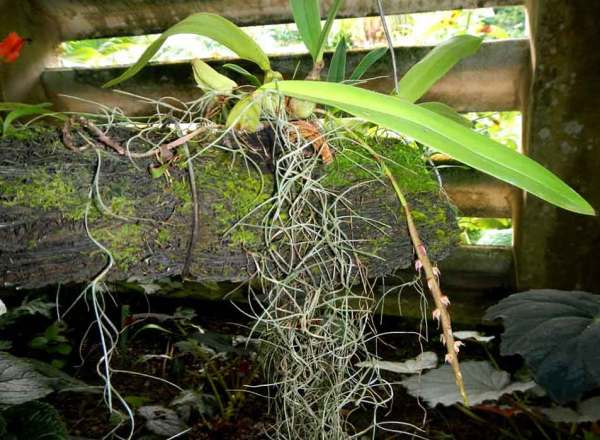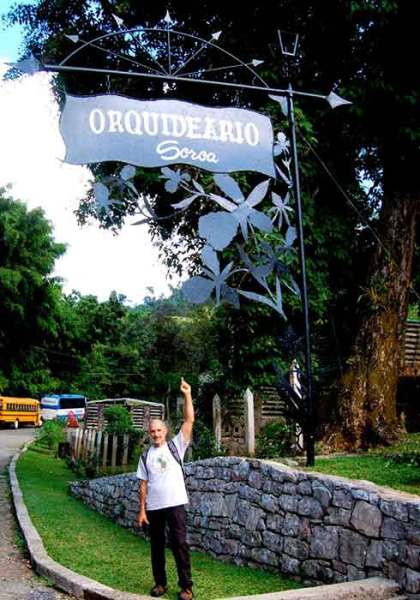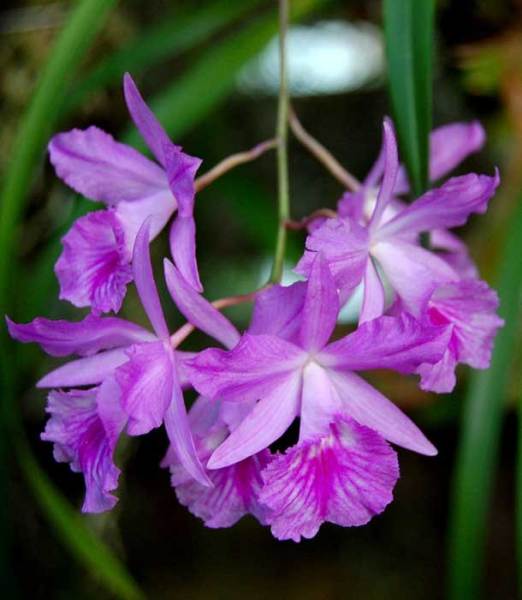by Dennis Giardina
There is a quote from “If” by Rudyard Kipling that is particularly meaningful to me:
“If you can dream – and not make dreams your master;
If you can think – and not make thoughts your aim;
If you can meet with Triumph and Disaster
And treat those two imposters just the same.”
Although I appreciate the insight of Kipling, imposter or not, Triumph is a lot more fun to hang around with. When it comes to Disaster and Catastrophe, Failure and Defeat, there is really only one refuge, Hope. That is what keeps us going, or at least it’s what keeps me going, back to Cuba. It seems like such a small thing to ask really; just a few seeds of a few extinct Florida orchids, species that are not showy or commercially valuable. They are not species known to have any particular importance in the ecosystem, and their removal from the Fakahatchee Strand, the absence of their presence, has had no broader environmental consequence.
I’ll admit that their value may be more psychological than ecological, but my perspective is that our predecessors, the people who sought out these same orchid species and who ultimately over-collected and wiped out Bulbophyllum pachyrachis and Epidendrum acunae, left us with something that I feel is akin to a moral debt, a debt to future generations of orchid biodiversity enthusiasts. To me, that means two things: stopping or reducing as much as possible the continued illegal collection of Fakahatchee’s orchids and bringing the two species that we extirpated, Fakahatchee’s “lost” orchids back.
I returned to Cuba for the third time in just over a year on November 10, 2013 to present a paper called “Melaleuca Control in the Florida Everglades, 25 Years of Integrated Pest Management,” at the Caribbean Wetlands Symposium. It was held at Playa Girón Resort, located at the mouth of the Bay of Pigs, next to the Zapata Swamp Biosphere Reserve. My travel to Cuba was sponsored again by the Nature Conservancy’s Florida-Caribbean Fire and Invasives Learning Network. My expenses while in the country were again covered by the Cuban government, including lodging, food, and transportation.
The Zapata Swamp Biosphere Reserve is a UNESCO World Heritage Site and the most diverse wetland system in the entire Caribbean Basin. It looks remarkably similar to the Florida Everglades and, like the Everglades, it has Melaleuca quinquinervia invading it. An ornamental stand of Melaleuca was planted approximately seventy years ago on a small island in Treasure Lagoon in the center of the Reserve. Iit has spread aggressively. It was later planted in a few other sites around the region for various reasons, and apparently it has now reached critical mass. The Cubans have very few resources and no experience controlling Melaleuca. They need help and that’s what we’re continuing to try to do.
My ulterior mission, of course, was to get back to Soroa Botanical Garden, the Orquideario, to visit with Dr. Perez. During the last week of October 2012, when Mike Owen and I were there for the International Orchid Conference, one of the several rat-tail orchids that were in flower had a large, ripening seed capsule on it. I hoped, during the third week of November 2013, that there would be even more of a chance of finding a seed capsule there.
I actually arrived a day earlier than my colleagues to be able to visit the National Botanical Garden located on the outskirts of Havana with the hope that one of our lost orchids would also be in their collection. After being delayed at the entrance of the National Botanical Garden for almost two hours, and then woozy from a long ride in a tram car pulled by a smoky tractor, my expectations were very low when I entered an enclosed area where they told me that I could see their orchid display. The complex of strangely shaped, connected greenhouses had a pretty interesting collection of cacti, succulents and other desert plants, but there were actually very few orchids and none of the species I was looking for. When I asked our tour guide if the Garden had any native Cuban orchids, perhaps not on display to the public, she answered that the best place to see orchids was at the Orquideario in Soroa.
Transportation is expensive in Cuba. I checked into renting a car for a day in Havana. I phoned Dr. Perez from Zapata and told him how much it was going to cost; he told me that he would take care of it. On Saturday morning, the last day of the trip, he and a driver that he hired in Soroa, chauffeured me and my colleague Tim Andrus out to the Botanical Garden for the day and then returned us to Havana in the late afternoon. We arrived at about 8:30 in the morning and went up to Dr. Perez’s third floor office that overlooks the Rosary Mountains Biosphere Reserve where we sat and were served some mighty strong espresso. We watched the fog lift and the sun gradually light up the colorful countryside. While Dr. Perez and I talked, Tim explored his library, which included some incredible orchid books from the late 1800’s.
Unlike last time, I did not wait very long before I brought up our orchid restoration project, how important it is to us, how critical his collaboration is, and how much we appreciate it. As the caffeine kicked in, I repeated the details and objectives and then I said, “Last year we were here during the last week of October and there was a seed capsule on one of the Bulbophyllum pachyrhachis orchids. Are there any now?”
He said that he didn’t remember seeing any but that we would take a walk down to the greenhouse and take a look. By then the Garden was bustling with the activity of the staff and the small groups of tourists they attended. Our short walk was full of exuberance. There were orchids everywhere, their flowers bursting from every tree and seemingly every corner, crag and cranny. Butterflies fluttered and birds sang until we reached the greenhouse where their collection of native Cuban orchids is kept locked up and off-limits to general visitors. He pulled a string through a seal-imprinted blob of putty inside a bottle cap attached to a tiny wooden box that was connected to the key. He opened the door. I took a deep breath and stepped inside.
To be continued…
Dennis Giardina is the Everglades Region Biologist for the Florida Fish and Wildlife Conservation Commission and was formerly the Park Manager of Fakahatchee Strand Preserve.





